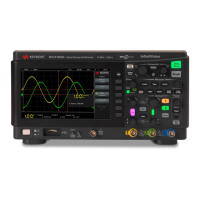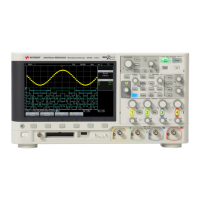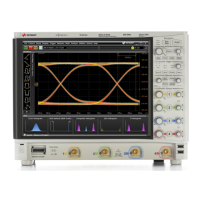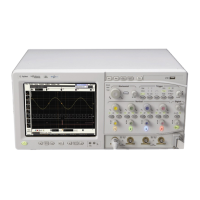76 Keysight InfiniiVision HD3-Series Oscilloscopes User's Guide
5 Math Waveforms
2 In the tab for the math function you want to use, select On.
3 From the Operator list, select the arithmetic, transform, FFT, filter, or
visualization math function you want to display.
To filter the operator list, you can select the Category of operators you want to
select from:
• All — All math function operators.
• Arithmetic — Only arithmetic math function operators (add, subtract,
multiply, or divide of two waveform sources). See "Arithmetic Math
Functions"
on page 78.
• Transforms — Only math function operators that transform a single waveform
source (for example, differentiate, integrate, logarithm, exponential). See
"Transforms Math Functions" on page 80.
• FFT — Only FFT math function operators (FFT magnitude or FFT phase). See
"FFT Math Functions" on page 88.
• Filters — Only math function operators that apply filters to a single waveform
source (for example, low-pass, high-pass, band-pass, smoothing). See
"Filters Math Functions" on page 90.
• Visualizations — Only math function operators that plot selected values (for
example, maximum, minimum, measurement trend, chart). See
"Visualizations Math Functions" on page 93.
4 Use the Source 1 drop-down list to select the analog channel, lower math
function, or reference waveform on which to perform math.
Higher math functions can operate on lower math functions when using
operators other than the simple arithmetic operations (+, -, *, /). For example, if
Math 1 is set up as a subtract operation between channels 1 and 2, the Math 2
function could be set up as a FFT operation on the Math 1 function. These are
called cascaded math functions.
To cascade math functions, select the lower math function using the Source 1
drop-down-list.
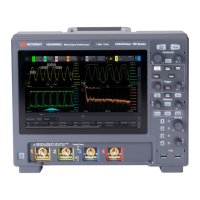
